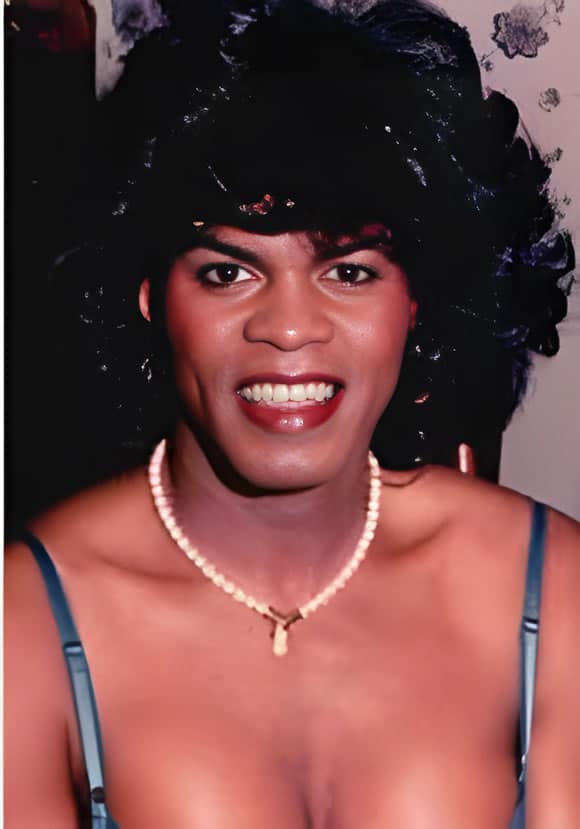What Does Transgendered Really Mean?
What Does Transgendered Really Mean? By Roberta Angela Dee
WHAT DOES TRANSGENDERED REALLY MEAN?

In the scientific community, it is easy to suggest that a transgendered man is simply the opposite of a transgendered woman. In other words, it is easy to say that a transgendered man is simply someone born anatomically female who wants to become a male.
What’s wrong with the word ‘transgendered’
I have never liked the word transgendered. I suppose I could wait for some distinguished scholar to write a thesis and explain why the word is inaccurate. However, that is likely to take another 10 or 15 years. Therefore, I will do it now.
When a young girl realizes that her feelings are more accurately identified with males than with females, she is beginning to define her gender. She is anatomically defined at birth as female, and it is assumed that she will identify with becoming a woman. However, if she does not identify with being a woman, then the scientists arrive with their labels.
If the scientific analysis is that she is “a man in a woman’s body,” they label her transsexual. If the scientific analysis is that she simply does not understand which gender she is supposed to be, then they label her transgendered, and suggest that she is suffering from a gender identity disorder, or from gender dysphoria.
Gender dysphoria
Of all these terms, “gender dysphoria” is my absolute favorite. Why? — Because it infers that she has a gender but that her gender is dysfunctional. This is so far removed from being scientific that it astounds me that anyone can even utter these words. How can gender ever be dysfunctional?
At this point, the psychologists, psychiatrists and sociologist explain that the phrase does solely apply to gender, but rather to the individual’s association with their gender — which, of course, I already understand. This being the case, the scientific community is suggesting that it is not the gender that is dysfunctional but rather the individual.
They call it “gender dysphoria” anyway, because you can do that when you really do not understand what it is you are talking about in the first place. What they are really saying is that the individual is dysfunctional.
Correct and incorrect terminology
In so far that these medical professionals have placed themselves in the very distinguished position of deciding whether or not an individual should or can have surgery to become functional, we should at least expect them to be able to use correct terminology. We should, but we do not. Instead, we use their inaccurate terminology and then prance around as though we are enlightened and informed, when in fact we are misinformed.
Anyway, we still have this dysfunctional young woman. So, my next question is: What is her dysfunction?
It is a fair question. Is it not? If an individual is dysfunctional, he or she should have a dysfunction.
Well, the doctor says, “Her dysfunction is established by the fact that she is anatomically female and is unable to socialize as a normal female. That is her dysfunction. Is this not correct?”
Confusing anatomy with gender
No, my distinguished colleague, that is not correct. It is true that he is anatomically female. However, he is not able to socialize as a normal female because he is a male. You confuse anatomy with gender. That is your misunderstanding, not his. The only problem or dysfunction this individual has is with getting the scientific community to distinguish between sex and gender, and educating the public to be able to make the same distinctions.
The problem is not with the individual. The problem is with the scientific community, and with society.
Another problem is that this individual must pay a psychologist $75 dollars an hour, for a year, merely to be misinformed. That, however, is another issue.
DOES GENDER ALWAYS FOLLOW ANATOMY?
Gender does not always follow anatomy.
We all know men who are more “feminine” than some women, and women who are more “masculine” than some men. Are they dysfunctional? No Why not? — Because society does not regard their behavior as being so outlandish as to want to subject the individual to its cultural prejudices. It only becomes a problem when “Judy” says, “I’m a man and I want to be treated and respected as a man.”
What must Judy do to function as a man in society? Judy simply needs to be Judy.
Judy can do anything any man does, except to father a child. However, if a man is sterile, is he considered less a man? Does society say, he cannot be a man because he has not fathered a child?
TRANSGENDERED LESBIANS
Another source of confusion within the study of gender, as well as within the gender community, is that a number of different meanings are assigned to the same word — that word being transgendered. It’s like using the word red to mean blue, green, gray, and sometimes red.
Transgendered-1
The original meaning was introduced to the gender community by Virginia Prince, perhaps around 1958. Virginia had taken female hormones, had fully developed feminine breasts, and wore woman’s attire. Still, Virginia stated he was a man. He did not profess to be a woman, and distinguished himself from a transvestite or cross dresser, because he did not dress for the mere enjoyment of cross-dressing but because he felt more comfortable projecting the image of a female. Therefore, the first definition can be stated as: an individual of one sex that is more comfortable living as a member of the opposite sex and who may take hormones to facilitate that effort, but refers to himself or herself according to their anatomical sex.
Transgendered-2
Later, the word transgendered was used to refer to an individual who was transsexual but did not wish to have sex reassignment surgery (SRS), less formally known as a sex change operation. This is the classic “woman in a man’s body” or “man in a woman’s body.”
The word almost immediately created problems, because individuals did not believe they were “crossing” from one gender to another, as the word suggests. They understood that their sex was different from their gender. However, as a person, they identified with their mind more than their body.
Therefore, the second definition can be stated as: an individual of one sex that is more comfortable living as a member of the opposite sex and who may take hormones to facilitate that effort, and refers to himself or herself according to their preferred gender. Such individuals do not desire sex reassignment surgery (SRS).
Transgendered-3
Within the lesbian community, the word transgendered has yet another definition. Here the word is used to refer to a woman who is masculine in terms of dress and mannerisms and identifies as male, but does not regard himself to be a man. Some prefer to say that there gender is neither male, nor female. They prefer to say their gender is butch. This definition contains elements of the two previous definitions, but is different in what it says about the individual and about gender.
Nonoperative Transsexual
Some individuals, to avoid using the word transgendered, refer to themselves as nonoperative transsexuals. In this case, nonoperative is used to indicate that the individual has no desire to have sex reassignment surgery. It’s an awkward phrase because it’s a contradiction. Transsexual seek surgery – a sex change operation. So what sense does it make to be a nonoperative transsexual.
Transsexual Lesbian
About 10 years ago, I wrote a novella for Reluctant Press, titled, Roberta Angela Dee: Transsexual Lesbian. It was a story about a transgendered woman who becomes a sort of concubine to two lesbians. The phrase “transsexual lesbian” later became quite popular. It continues to be used by male-to-female transsexuals who have a sexual preference for women. More importantly, at least to me, the novella continues to be a good seller.
Whether one agrees with all or none of these definitions, or accepts some while rejecting others, the underlying condition is the same for each case. The underlying condition is that an individual’s anatomical sex conflicts, to varying degrees, with their preferred gender — the gender with which they identify.
The word transgender suggests changing gender
Again, the problem with the word transgender is that it suggests changing one’s gender. These individuals have no desire to change their gender. Their sole wish is to be accepted by society in accordance with their gender preference. They are not dysfunctional, except as far as society imposes restrictions or limitation on their lives.
The legal criteria for a man to be have status as a woman is that they alter their genitalia. The logic stems from Christine Jorgenson’s statement that she was “a woman in a man’s body” and had gone to Sweden to have a sex change operation. From that day to this, the criteria has been to have surgery.
The medical profession readily accepted the idea that for a man to become a woman, a surgeon must surgically alter his anatomy. And why not? Few surgical teams would turn their noses at a $12,000 dollar operation, not including subsequent office visits. Psychologists and psychiatrists also benefit through $75 dollar-per-hour visits for a period of one year.
The “logic” here is that a surgeon does not want to perform an irreversible procedure and find himself or herself being sued by the patient at a later date. So, he or she calls in a psychologist. Why not call in a guru, an ancient culture priest, or a Tarot card reader?
Frankly, I have more faith in the I Ching or Tarot cards than the DSM-IV — the so-called diagnostic bible for psychologists. Why don’t we tell women that before they can have breast implants, they must live for one year wearing a stuffed larger bra, and undergo a psychiatric examination. Why not? Because women would not stand for it.
TRANSMAN
Now what does all of this have to do with transmen?
This entire essay is about our need to reevaluate how we look at gender, how we look at transsexuals, and how we look at the medical profession.
There’s a reason why transsexual so often appear on television talk shows. They project the idea that being transgendered or transsexual is somehow deviant and dysfunctional. Frankly, I’ve grown tired of that image.
Female-to-male transsexuals
Female-to-male transsexuals, and female-to-male transgendered men are not simply “the opposite” of male-to-female transsexuals and transgenderd women. And here lies another problem: If the legal solution for allowing a man to become a woman through a surgical procedure, what it the legal solution for a woman who wants to be legally recognized as a man? Is it constitutionally acceptable to require men to have surgery but not women?
The law confuses sex and gender. The law fails to understand that an individual can be a woman although she is anatomically male.
The law also fails to understand that gender is not always restricted to 100% male or 100% female. A man can be 75% male and 25% female, in terms of gender.
Variations of male and female
Lesbians seem, for whatever reason, to have grasped this idea long before the professionals. Some lesbians not only recognize that an individual can be variations of male and female, but that an individual can be some combination that is neither male or female. Some lesbians recognize “butch” and “femme” as genders.
As I have said, the issues affecting transsexual and transgendered men are different from the issues affecting transsexual and transgendered women. Women who are anatomically male have different medical issues from women who are anatomically male. The transition into society as the preferred gender is also different. In other words, society looks differently at men who prefer to live as women than it does women who prefer to live as men.
The gender community has suffered a grave disservice by physicians who want to be praised as pioneers, by psychologist working from a handbook in serious need of a good editor, by talk show hosts, and by post-operative physicians with web pages.
I am a woman, in spite of the fact that I was born anatomically male. I am not a clown. I am not a freak. I am not dysfunctional.
The End
More by Roberta Angela Dee
The Transgender Guide Site Links:
- Trans Clothing & Accessories
- Transgender Support Groups
- Transgender Voice Training
- Trans Friends & Support Chat (non-adult)
- Trans Adult & Dating Chat (adult-oriented)
- Transgender Friends and Dating Profiles
- Transgender Social Media at TGGuide
Roberta Angela Dee, Journalist & Trans Activist

Roberta Angela Dee (October 31, 1950–March 13, 2003) was an American author, transgender rights activist and frequent contributor to TGGuide.com. Roberta was born in Brooklyn, New York, grew up in Long Island, and lived in Atlanta before settling in Augusta, Georgia. She had a journalism degree. Her writing was published widely, and she was founder of the Women on the Net (WON) website, an early online resource for women of color.
